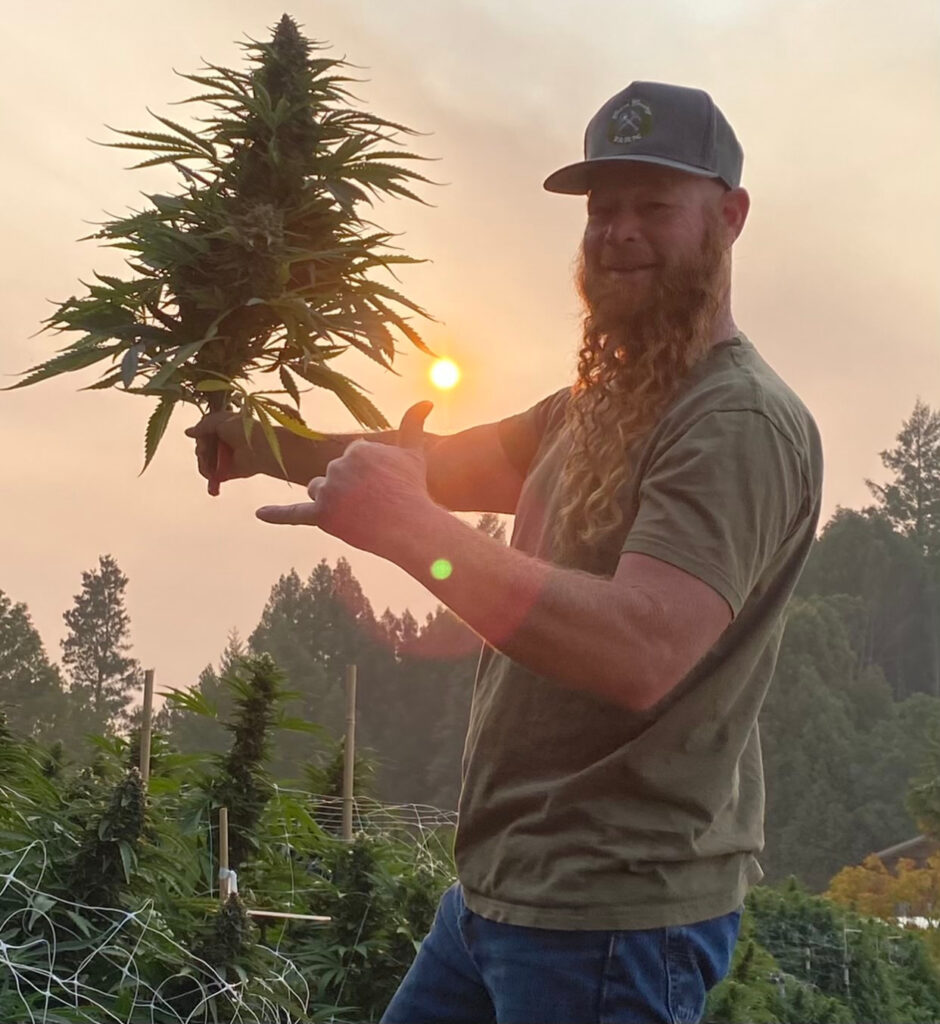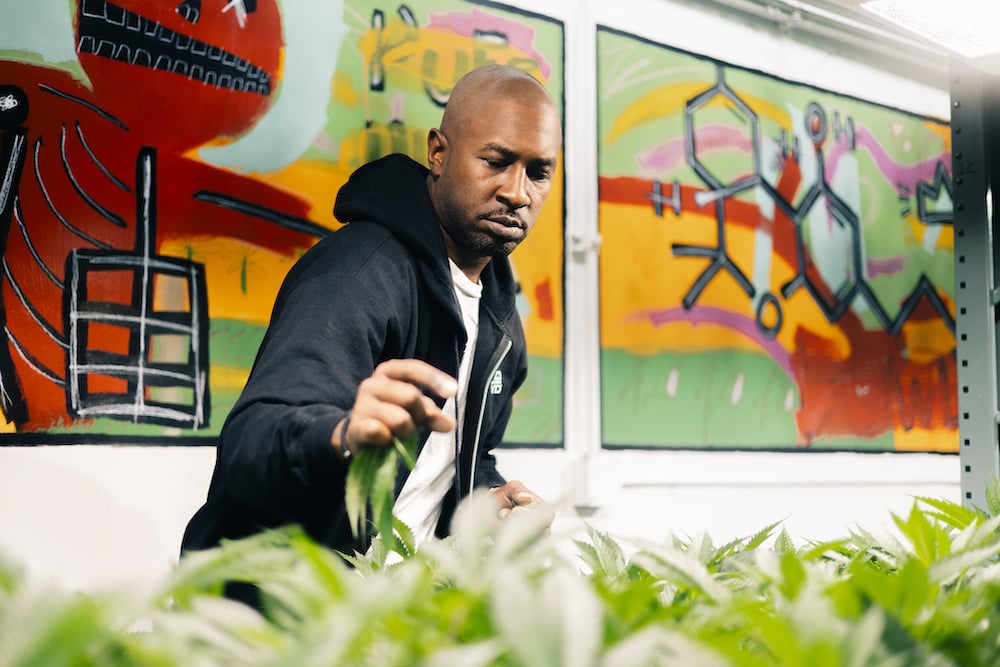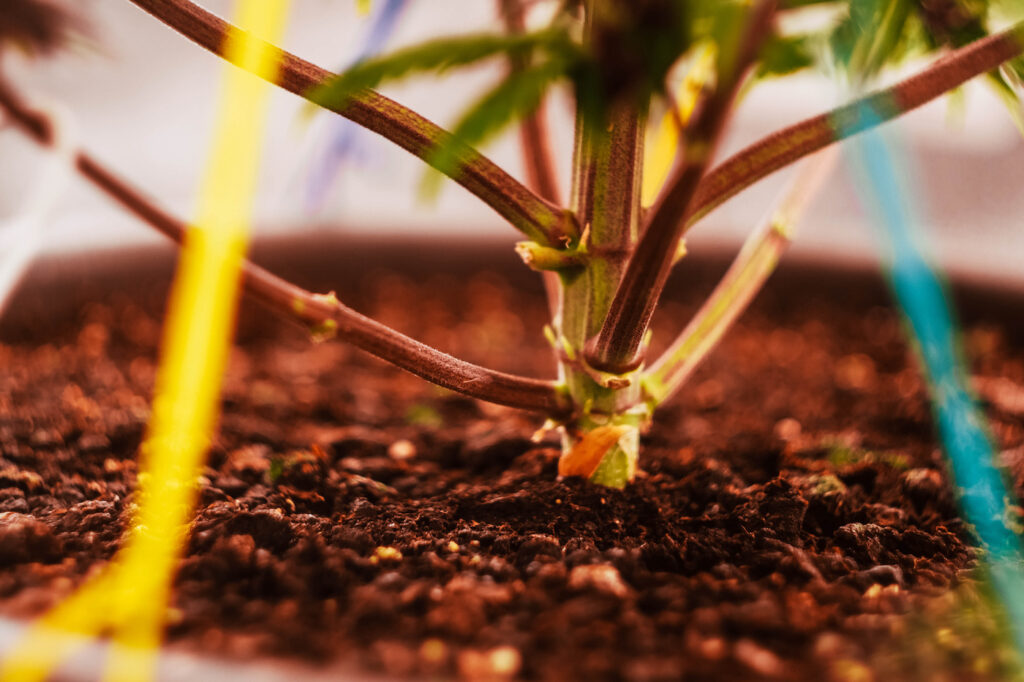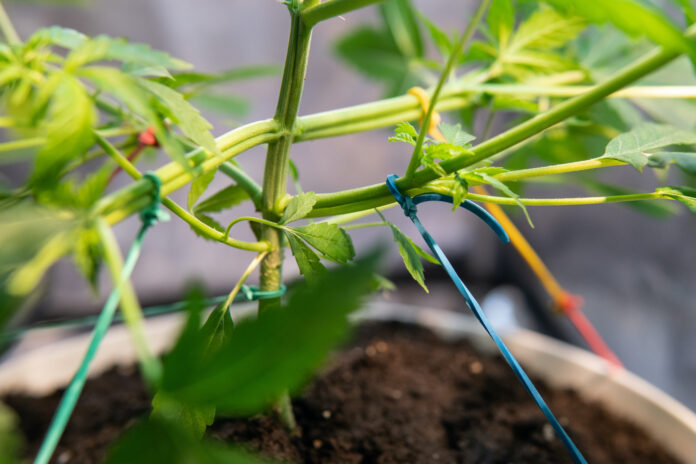Like bonsai techniques, low-stress training (LST) involves bending the apical main stem and branches to direct their shape. This training technique ultimately allows cultivators to expose different parts of the plant to direct light and airflow, naturally encouraging the production of additional large colas.
What is low-stress training?
Low-stress training is any method of plant training that doesn’t overly stress a plant. For example, removing a few wilting leaves would be considered a low-stress activity, while incorrectly trimming fan leaves by removing far too much healthy plant material would be considered a high-stress activity.
“LST has become a standard operating procedure for anyone who is growing at a commercial scale, or even for anyone who is growing at home and not necessarily looking to have the greatest yield,” said Christian Pantoja, head cultivation technician at Purple Lotus. “It’s used to manipulate branches so the lower branches and nodes are getting lots of light, increasing yield, and maximizing the canopy space you have to get the most out of your plant, so whatever tools you can use for those benefits, the better.”
Cultivators have looked to plant training techniques like LST for thousands of years with the same goal of increasing their yield and maximizing their plants’ potential. Of course, LST applies to each crop somewhat differently, depending on the structure.
Apical dominance is prominent in cannabis plants, which is defined as the tendency of a plant to grow in a Christmas tree-like shape with thinner sections toward the top. This growth shape will occur naturally, blocking sunlight from reaching the entire plant with a negative effect on growth and yield.

LST is an effective solution to this apical dominance dilemma by opening areas of the plant to receive more sunlight on budding sites that may normally only produce smaller buds. It’s largely utilized in mother rooms for propagation purposes, which is when The Flower Shop’s cultivation team usually turns to low-stress training.
“LST really maximizes the clone count in your mother room, ” said Brandon Alonzo, director of cultivation at The Flower Shop. “You can top the plant to where you’re focused in on a more uniform canopy. We use it in our mother rooms to maximize our cuts. Lots of people utilize low-stress training in the vegetative or pre-flower stages, focusing on that bud production.”
How does low-stress training affect cannabis plants?
Unlike high-stress training—which may not give your plant enough time to recover from the process and result in growth damage—LST cannabis is simple, low-budget, and poses little to no threat to your plant’s stems and branches. This method is mainly utilized to increase yield rather than manipulate terpene or cannabinoid profiles.
“LST is done to maximize yield, quality, and space utilization,” Jesce Horton, chief executive officer at LOWD. “It is common in all forms of cultivation, indoor, greenhouse, and outdoor growing, and it’s typically done during the early stages of vegetative growth rather than the flowering stage.

“This method will increase the number of growth nodes at the top of the plant, and also delay vertical growth. Bending will also help the branches to grow in a way that allows each branch to get more light and fill the canopy space. The nodes on the branches benefit by having more light and airflow, the same reasons to properly trim fan leaves. When you have more branches at even height, it creates an even canopy that fully utilizes the lighting efficiency zone and reduces the amount of maintenance work for gardeners.”
According to Massachusetts-based cultivation manager Michael Burns, most plants could benefit from training but genetics do play a role.
“Some genetics may require plant manipulation, whether topping, low-stress training, super cropping, fimming, scrogging, or strategic methods of removing branching to achieve a specific shape or uniformity,” said Burns. “There is no right or wrong way to go about any of these practices, and it all comes down to the cultivar, the setting you are growing in, and what you are attempting to achieve.”
Autoflower low-stress training
Training autoflowers requires a bit more attention and care. Autoflower plants move through their vegetation stage more quickly than other varieties like photoperiods and triploids. As a result, any stress during their shorter vegetation stage could have a significant negative impact on their final development.
How to start low-stress training
There are a few things to keep in mind if you want your plants to grow to their fullest potential utilizing this method over others, like the screen of green (SCROG) method or simple natural apical dominance. But if you’ve seen a week of flower, it’s far too late to start this method.

Preparing the required equipment for LST training
Traditional low-stress training involves a few tools that allow for bending stems and/or tying them together, but in general, it’s a pretty simple method to prepare for when it comes to equipment.
“You can use garden tape, plant ties, sticks, or netting—anything that allows you to bend a branch in a certain way that helps you manipulate the growth of your plants,” said Christian Pantoja.
The type of equipment you can utilize is flexible depending on your needs and desires, but as long as you’re working with tools that maximize yield—even duct tape—you can’t go wrong.
Preparing your room for LST
LST is typically utilized within indoor grow spaces, as these are the areas where things like temperature and humidity circulation are most challenging for growers to maintain.
The main thing you’ll want to focus on when it comes to preparation is your plant containers, which are your sources for tying down stems and branches. You’ll want to drill several holes around the rim of your growing container, allowing you to loop ties and twists through the holes to secure your weed plant in the direction you’d like it to grow.
Maintaining your LST throughout the grow
As for long-term maintenance when using low-stress training indoors and outdoors, there are a few things to keep an eye on for consistent and maximum results.
First, focus on maintaining a flat canopy, ensuring no side branches are taller than any of your others and blocking any amount of light. Aim for shaping outward and as far away from the main stem as possible.
Pay close attention to your plant’s directional growth as often as you can, as this isn’t something you’ll be able to forget about a week after you start LST. Consistency is key for most cannabis growth tactics, and low-stress training is no exception.









